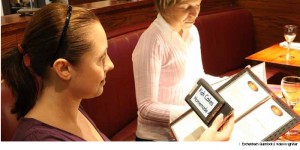Too Few Canadians Accessing Low Vision Services (Low Vision Story, Part 2)
ByJoAnne Sommers
Only one in 10 Canadians with low vision problems is getting the support services they need, according to the head of the country’s only accredited low vision clinic.
One of the major issues in terms of accessing appropriate services is the lack of awareness on the part of both patients and some eyecare professionals of what exists, says Ann Plotkin, head of the Low Vision Clinic, Centre for Sight Enhancement (CSE) at theUniversityofWaterloo. As well, relatively few people who get a low vision diagnosis are referred to the services they need, she says.
“People often go into stun mode when the doctor tells them they have a problem, such as wet AMD (Age Related Macular Degeneration), which has few treatment options. As a result they don’t hear what comes next. Rehabilitation options exist but either they are not told about them or they don’t comprehend what they are hearing.”
Such a response isn’t surprising, says Ken Patterson, westernCanadasales representative for HumanWare, a leader in assistive technologies for vision, including products for the blind and visually impaired.
“As a society, we take vision for granted and the moment we start struggling, we tend to give up because we think there’s nothing we can do,” he says.
Plotkin says it is important for eyecare specialists to put a low vision diagnosis in the proper perspective for their patients.
“People often get hung up on the word ‘blind’. They don’t understand that it’s only a number (for example: 20/200) and that it doesn’t mean they have no remaining vision. ECPs should try to keep things positive and if they aren’t in a position to help the patient, they should immediately refer them to a low vision clinic or a specialist who can. Don’t wait until the person is legally blind and their quality of life has been severely compromised.”
Finding a low vision specialist can also be a significant challenge. “There aren’t enough services available in Canadaand some cities have no one who provides low vision services,” says Ryan Heeney, national sales manager, Canada for Eschenbach Optik of America.
According to Heeney, most low vision patients are served by optometrists because of the relative scarcity of ophthalmologists inCanada. And while low vision clinics do a good job, they are few and far between.
Plotkin agrees. “There are not enough people inCanadawho do low vision assessments,” she says. “The work is very labour-intensive and it is not a money maker so people aren’t attracted to it. I spend an average of two hours on each patient appointment, which means I can see only four patients most days. You have to be willing to listen to patients while they talk about their problems and frustrations, and try to understand what they need. A lot of after-care, including report writing, is also involved.”
Another challenge is that very few people meet the standards set by the National Accreditation Council of Agencies Serving the Blind and Visually Impaired. The U.S.-based organization is the standard-setting and accrediting body that works with agencies and schools to provide services and programs to people who are blind.
TheUniversityofWaterloohas the only accredited low vision clinic inCanada. Located within the School of Optometry’s Optometry Clinic, Low Vision Services provide a range of vision rehabilitation services, including assessment, prescription, instruction and rehabilitation; information and referral for medical, social, educational, vocational and financial services; consultation with and referral to other specialty clinics within the School of Optometry and to community services; and basic and clinical research into various aspects of low vision.
Plotkin says that while the services of ophthalmologists are covered by the Ontario Health Insurance Plan (OHIP) there are simply too few of them to fill the need. That’s why her organization has been urging the government to cover optometrists’ services as well.
“At present, they fund low vision assistive devices but not optometrists’ services. It costs $125 for a low vision assessment and many people either don’t want to pay for it themselves or can’t afford to.”
Who Should You Call?
Here’s how to get in touch with low vision service providers:
InOntariocontact the Ministry of Health and Long-Term Care, Assistive Devices Program, for a list of authorizors in the vision category. Elsewhere, you can contact provincial associations of optometry and ophthalmology to find out who is doing low vision work in your area.
You can also contact agencies and services that work with people who have vision impairments, such as CNIB, MAB-Mackay and VIEWS for the Visually Impaired and Balance. Organizations that work with specific diseases include NOAH (National Organization For Albinism and Hypopigmentation) and AMD.org. Other resources include disability offices at universities and seniors’ centres.


